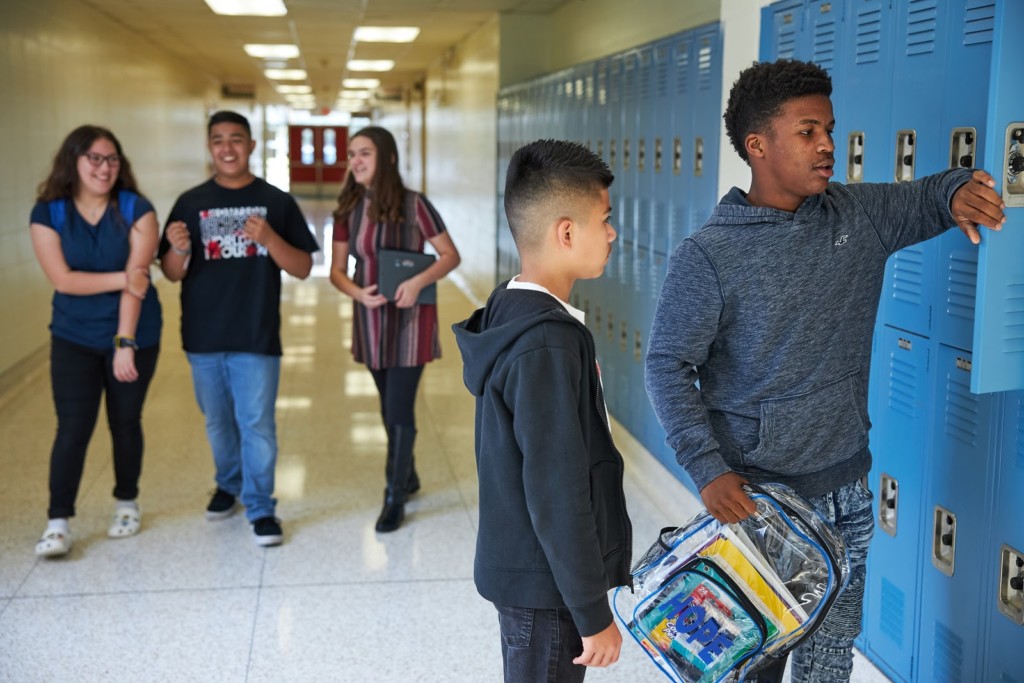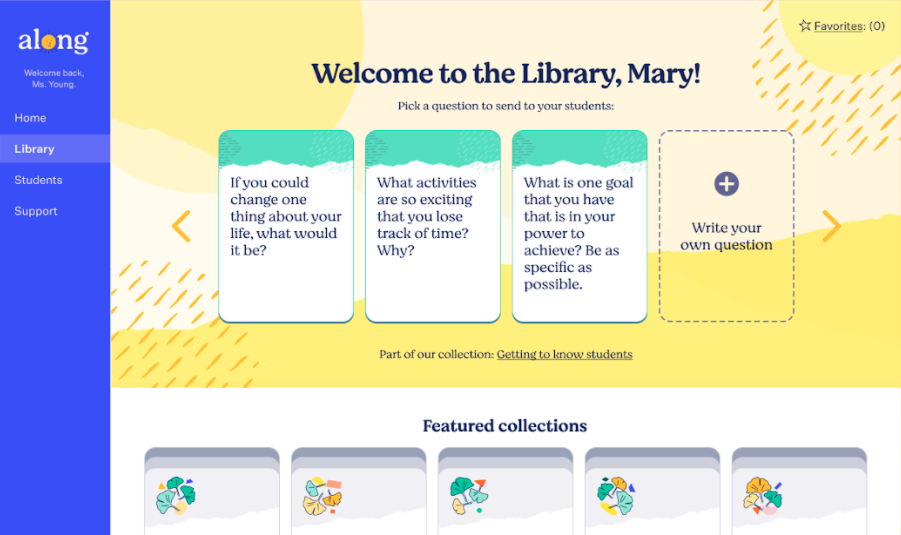3 Strategies to Provide Mentorship and Support to Students During Challenging Times
Key Points
-
By adopting a people-first mindset, surveying students to understand their lives outside of school, and using digital tools, educators at Thompson Intermediate School in Houston, TX, were able to focus on supporting students holistically during a tumultuous time.
-
Building close relationships with students led to more classroom engagement, a greater willingness to learn, and better behavior from students because they recognized that educators wanted them to succeed academically and cared about their well-being.

By: Kelli Moneyhun
As we near the two-year anniversary of the start of the pandemic, educators and students face a host of new challenges. And while the pandemic has taken a lot of opportunities away from students, it has also given educators the chance to reevaluate our practices and prioritize what is most important to us and our students.
At our school, we began the year with a renewed focus on fostering relationships and connections to support our students’ social-emotional learning needs. Our goal was to build a safe and trusting community where our students are known as individuals. Also, according to a recent national survey, students with strong connections to teachers reported that they pay attention and participate in class more.
In celebration of National Mentoring Month, here are three strategies we used at Pasadena Independent School District to support and mentor our students through challenging times, strengthening our school community in the process.
Adopt a people-first mindset
Our staff embraced a mindset that has helped us navigate the unexpected challenges of this school year. By understanding students as people first, we were able to create deeper and more meaningful relationships that translated into widespread cultural change on our campus.
Our principal, Tanis Griffin, believes that if we “put relationships first, content will come. We’ve got to embed time in our school day to allow for social emotional learning and to allow for relationship building.”
We assigned each student a ”mentor teacher” to visit and speak with every day to establish relationships with a trusted adult on campus. When students know they have an educator on campus they can talk to and receive support from, we are able to understand and cater to students’ needs not only academically, but holistically.
Teachers were able to learn the first and last names of every student and vice versa. Students greeting each other and educators became the norm, instead of a rare occurrence as it was pre-pandemic.
Students were less likely to skip class or not turn in homework because the foundation of our relationship was understanding each other as people and our students knew that their teacher is someone they can rely on as a resource and a mentor.
Valuable one-on-one time between students and their teachers can lead to trusting relationships that encourage them to embrace challenges and be lifelong learners, and help students find a mentor that wants them to succeed.
Kelli Moneyhun
When we valued our relationships with students, they were willing to behave and learn in the classroom because they were able to recognize that one of our main goals as educators is to help our students succeed. We want our students to be in class, we want them to learn, and to realize that we care about them as individuals.
Survey students to understand what is going on in their lives
At the beginning of the school year, we sent a survey home with every student to understand who the student is outside of school. The questions were centered around their home life, family, daily stressors, hobbies and interests, and anything else they felt comfortable with sharing.
The survey results we received were life-changing. As educators, our reality of what the world looked like when we were students is much different than what students are experiencing now. Society, social media, and the current state of the world can affect students in different ways and still have just as much of an impact on their daily learning.
Once we could understand where our students were – both mentally and emotionally – we used the survey results to understand the student more holistically and translate that knowledge into our classrooms, lessons, and relationship-building.
Every student has different backgrounds, learning needs, and social-emotional needs. When we tap into that knowledge, we are better equipped to teach them and to build better relationships that are more personal and meaningful. It gave us the opportunity to reach out and help them in ways we couldn’t before because we didn’t know what our students were going through.
Use digital tools to maximize relationship-building opportunities
Our students and educators have busy lives and connecting one-on-one with students can be a major challenge when it seems like there isn’t enough time in the day. By implementing a digital tool to help maximize our opportunities to connect with students, we were able to build better relationships faster, easier, and in ways that students resonate with.
Our campus uses Along, a free, digital tool that offers thoughtful questions and prompts for teachers to ask their students. Along gives students a dedicated space to share who they are and what they care about directly with their teacher.

Along lets students communicate in ways that are familiar to them with the growing use of social media among middle and high school students. Students can respond via video, audio, or text message, which allows students who haven’t developed verbal communication skills to start a relationship with their teacher or mentor. These relationships can then be continued and built upon in the classroom and hallways.
For teachers, Along jump-started the process of forming meaningful connections with students. Educators were able to build and foster important relationships with their students in a way that maximized their time. Stefanie Cantin, a math teacher at Thompson, said, “Building relationships with those kids that I usually have a hard time getting to know happened so much faster this year.”
For students, one-on-one interaction with teachers can lead to trusting relationships that encourage them to embrace challenges and be lifelong learners, and help students find a mentor that wants them to succeed. One of our students, Hailey C., shared, “I’m a really big overthinker and I get anxious fast. Along helps me understand [teachers] more and them understand me, and then we can grow a good bond.”
By adopting a people-first mindset, surveying students, and using digital tools, we were able to focus our efforts this school year on what matters: supporting and caring about our students holistically during a tumultuous time in their lives. These small changes strengthened our campus community where students find the support and mentorship they need from their teachers.
Kelli Moneyhun is an SEL coach/teacher at Thompson Intermediate School in Pasadena Independent School District.



0 Comments
Leave a Comment
Your email address will not be published. All fields are required.